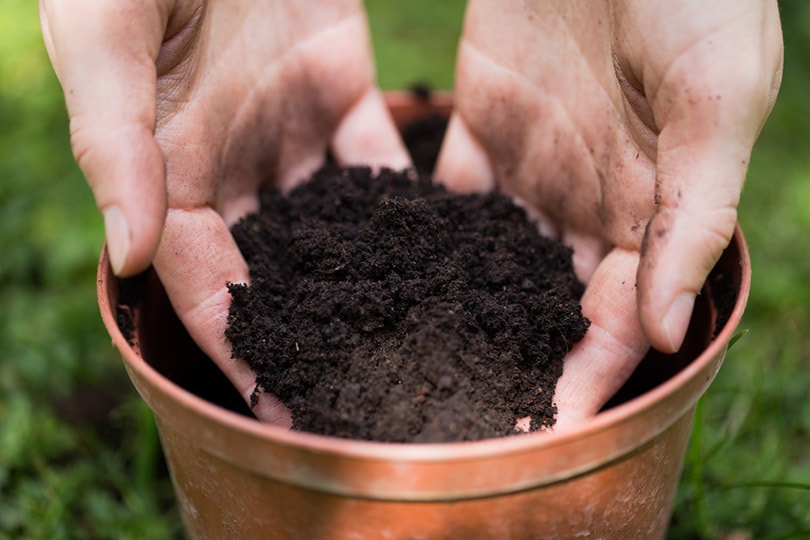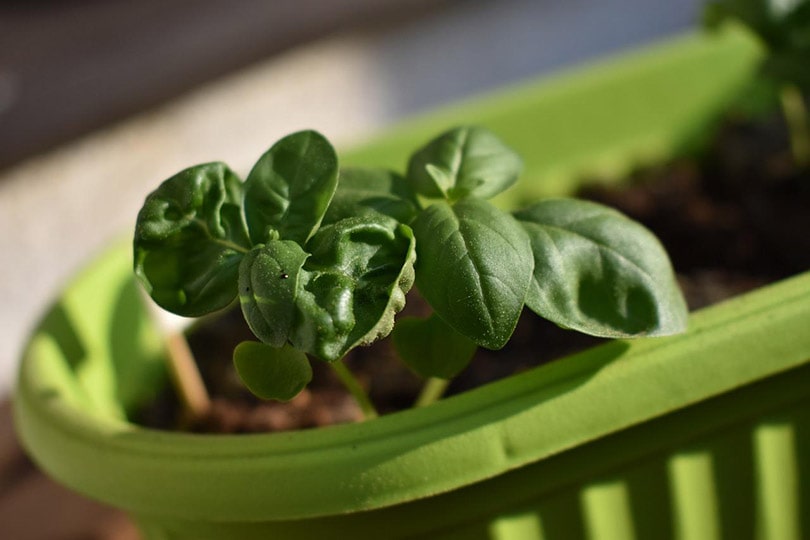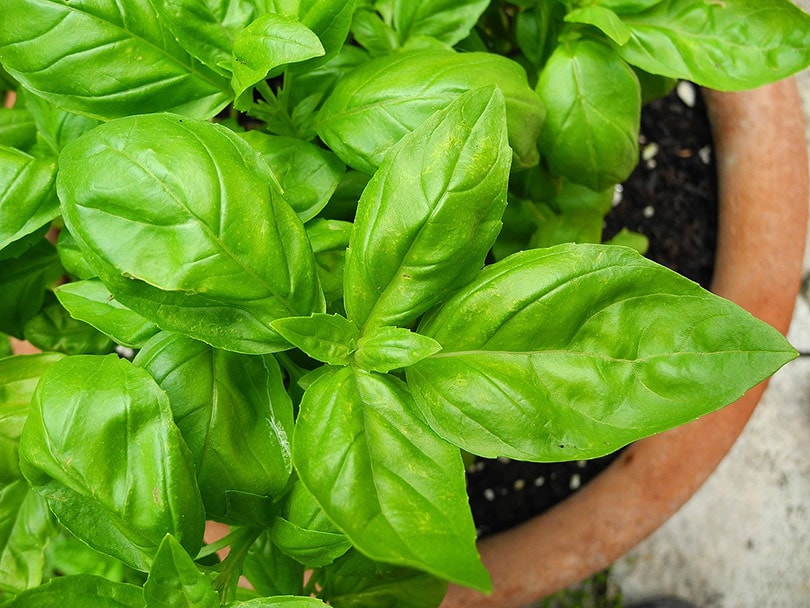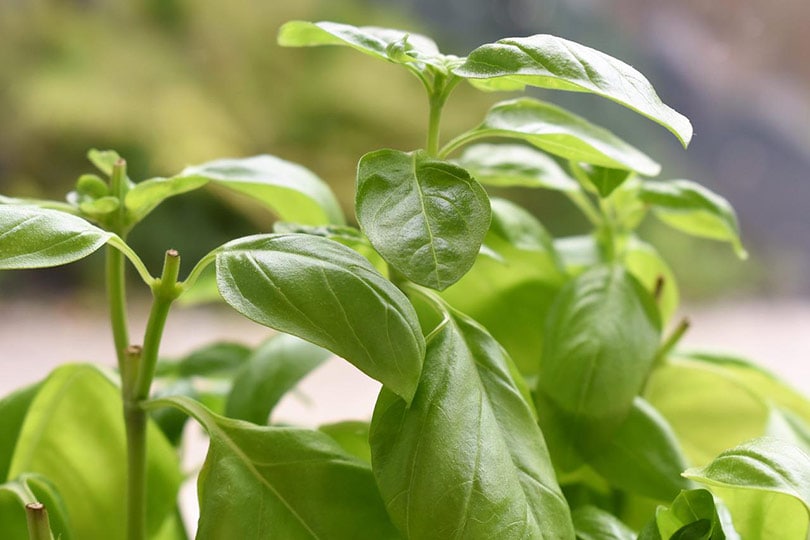Can Basil Grow Indoors? Tips, Tricks, and How-To Guide For Growing
-
Pete Ortiz
- Last updated:

Basil is a popular herb that has been used as a basic cooking spice for generations. Many people love the subtle taste of basil. With everything getting more expensive by the day, many people find themselves wondering if they can grow their own basil. Can basil grow indoors? Not everyone has a yard to start an outdoor herb garden. The good news is that, yes, basil can be grown indoors. However achieving the best results requires paying attention to a few key details that will help your basil thrive.
This article will go through a step-by-step guide covering how to grow basil indoors as well as tips and tricks to ensure you get a healthy crop year after year.
Preparation
Before you get started, there are a few things you will want to gather. Planting and growing basil is a relatively simple process. As long as you get the proper items, you will be able to hit the ground running and have your first batch of basil in no time.
- Basil seeds
- Potting soil
- Water
- A pot
- A sunny window or indoor grow light
- Time
- Optional: gloves
- Optional: fertilizer
Basil is not a hard plant to grow, so you do not have to have a serious green thumb to grow this herb. Basil takes about four weeks to grow to maturity before it is ready to harvest. Basil is an annual plant, so you can replant it over and over again and grow as much as you want. Set aside a space for your basil plant and be prepared to take care of your herbs for up to 8 weeks.
The 6 Steps for Growing Basil Indoors
1. Fill Pots With Soil
Fill your pot with soil stopping when the level reaches about two inches from the top. Make sure the soil is compact and even. Break up any visible clumps. Any potting soil will do the job, but there are soils out there made specifically for vegetables and herbs. Getting specialty soil is a bonus, but it should not be necessary for an herb like basil.

2. Wet The Soil For Planting
Next, wet the soil. Use regular water to get the soil nice and moist. Watch for drainage issues. Do not overfill the pot. Wet the soil until the top layer looks dark and moist. Seeds will need to be kept moist in order to thrive and sprout.
3. Plant Seeds
Now it is time to plant your seeds. Take the seeds in the palm of one hand. With the other hand, gently make depressions in the soil with the tip of your finger. Push down about one-half of an inch. In each depression, drop a seed. Make sure to keep the seeds spaced at least one inch apart. Once the pot is full, cover the seeds with a layer of dirt and smoothen the surface with your hand.
Once the seeds are covered, water the soil again. Make sure the soil remains dark and moist throughout. You will need to keep the pot moist until the seeds sprout.
4. Place The Pot In a Proper Spot
After the seeds are safely in the dirt, put the pot in an ideal location. The best spot for basil is in a warm sunny window. Basil needs at least six hours of direct sunlight per day to thrive. Ideally, the window will receive a full eight hours of sun. South-facing windows are the best place for basil.
5. Care For The Basil As It Grows
Basil can take anywhere from one week to two weeks to sprout. Before your basil sprouts, ensure the pot remains moist and in the sun. Once your basil sprouts, it is time to care for it. Make sure it is receiving enough sunlight and water.
If the basil begins to look unhealthy, fertilizer may be necessary. Basil takes four to six weeks to reach maturity. Care for the basil until it looks bushy and ready to eat.

6. Harvest Basil
The last step is to harvest your basil. After it is nice and full and ready for use, it is time to pluck off the tasty leaves and use them in your favorite dishes. Basil can be used as a spice or a garnish.
Once the basil is harvested, the plant will die. That is natural. Basil is not a permanent year-round plant. But if you want to get more basil, you can replant and start the process over again. If you get one successful crop of basil, getting a second one is usually easy.
Can Basil Be Grown Under Lights?
Yes, basil can be grown under sunlight, replicating lights. Basil will grow better in natural sunlight, but there are circumstances in which artificial light is necessary. You can use a light to grow basil in the winter when the sunlight is weak and short. Indoor lights can also be used in spaces where natural sunlight is hard to come by. Apartments or small houses with few windows could benefit from using light to help their basil grow.
Tips For Harvesting Basil
- Mature basil is full and leafy. You can tell that basil is getting ready to be harvested by running your fingers over the leaves. Once they start smelling pungent, they are ready to be plucked and used. You can always take a small piece off of a leaf and taste it to see if it is ready for harvesting.
- When you harvest basil, try not to take more than you need. If you only need a couple of leaves for a recipe, just take that. Gradually harvesting the basil will help keep it alive for longer, and it will produce more yield.
- When you harvest basil, gently pull off individual leaves. Try not to pull out the whole plant. Try not to break stems with multiple leaves on them. Pulling entire stems might sound quicker, but it can harm the overall health of your plant.

Tips For Repotting
Repotting a plant can be risky. Many times, the plant gets shocked by the repotting process and will start to struggle afterward. Many times, basil does not need to be repotted. If your basil is getting too crowded or bushy, simply harvest some leaves and thin it out. You can replant basil if you are looking to get a long-term robust basil plant, but in many cases, it is not necessary.
- Gently remove basil from the pot.
- Loosen roots and remove dry, clumpy soil.
- Dump out old potting soil.
- Get a bigger pot.
- Fill the new pot with fresh potting soil.
- Add basil plant to fresh soil.
- Water in the plant.
If you want to repot your basil plant, follow these simple steps.
That’s it. Watch your basil for signs of shock. If the plant starts to wilt and die after repotting, the plant might not have survived the transfer. This is common.
Things To Avoid
Basil is generally a very easy plant to grow, but there are some things you should avoid if you want to have the healthiest plant possible. First, avoid letting your basil get too cold. You might not be able to grow basil in the winter months. Basil likes temperatures that range from 60 to 85 degrees. If you have your basil in a cold environment, it will not grow.
Avoid having your basil in a shady spot. Basil needs a lot of light to grow. Keeping your basil in an area that does not receive adequate amounts of light will cause your basil to suffer.
Do not plant basil with other plants. Try to keep basil separate so you can manage and tend to the basil individually. Not all herbs need the same amount of water and sunlight. Keeping basil with other herbs might not allow you to care for your basil properly.

How To Help Unhealthy Looking Plants
Basil is a hardy herb that usually has no trouble growing indoors, but not all basil takes on the first try. Some basil struggles to grow and remain healthy. Basil that looks dull or wilted could be struggling.
- First, add some fertilizer to the soil. Sometimes potting soil can be deprived of the key nutrients plants need to grow. Adding a fertilizer made for herbs can help your plant perk right back up.
- Secondly, try and add more water to the plant. Check the soil to see if it is dry. Basil likes moist soil at all times, and your plant might simply want some more water to thrive.
- Last, check the temperature and the sunlight. Basil needs a minimum of six hours of direct light per day to grow. Basil also does poorly in cool and cold temperatures. Ideally, keep your basil at 70 degrees throughout its life. If you have your basil near a cold window, it could be preventing it from growing properly.
Moving Basil Outdoors
Basil can be grown entirely indoors, but it can also be moved outdoors. Starting fragile plants inside is a common practice and transplanting a more mature plant to an outdoor garden is absolutely possible. Basil that grows outdoors has the potential to grow larger than it can inside. Basil also has the opportunity to germinate and spread to surrounding soil when outdoors as opposed to indoors.
If you want to move your basil, take the pot outside and carefully remove the soil. Try to keep the soil compacted and around the roots of the basil. Move the plant into a pre-dug hole in your garden where you want the basil to live outdoors. Pat it down and compact the soil. Immediately water the transplanted herb to ensure that it seamlessly blends with the surrounding soil. Watch for signs of stress in your plant in the coming days after the transplant.
Conclusion
By following these simple steps and learning from these tips and tricks, you will have your own fresh grown basil in no time. Basil is a great herb to have, and it is easy to grow. It is the perfect indoor herb, and it is a great way for someone to start gardening easily. Anyone can have a full basil plant with a little care, love, and patience.
You May Also Like:
- Can You Grow Strawberries Indoors? Tips, Tricks, and How-To Guide
- Can you Grow Roses Indoors? Tips, Tricks, and How-to Guide
- 7 Companion Plants for Basil (with Pictures)
Featured Image Credit: seeandfeel2017, Pixabay
Contents



